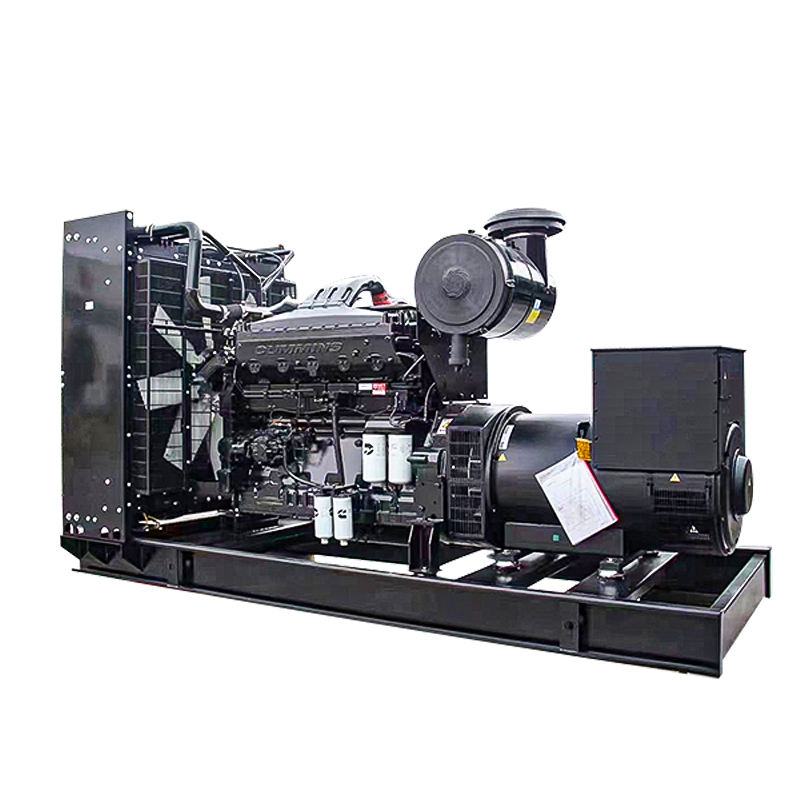What is the difference between a generator and a generator set?

In the world of power generation, the terms "generator" and "generator set" are often used, sometimes interchangeably. However, there's a fundamental difference that's critical to understand, especially when you're selecting backup power solutions, planning for off-grid living, or managing industrial operations. This in-depth guide will break down the distinctions, explore the components of each, discuss various applications, and help you make informed decisions.
What is a Generator? The Core Component
Rotor: The rotating part of the generator. It usually contains the magnets (either permanent magnets or electromagnets). The rotation of the rotor creates the changing magnetic field. Stator: The stationary part of the generator. It consists of coils of wire (conductors). The voltage is induced in these stator windings. Brushes and Slip Rings (or Commutator): These components (present in some generator types) transfer the electrical current from the rotating rotor to the stationary external circuit. Modern brushless generators use electronic components to achieve this, improving reliability and reducing maintenance.
What is a Generator Set (Genset)? The Complete Power Package
Engine: The heart of the genset. It converts the chemical energy of fuel (gasoline, diesel, propane, natural gas, etc.) into mechanical energy (rotational motion). Common engine types include: Diesel Engines: Known for their durability, fuel efficiency, and long lifespan. Often used in industrial and large standby applications. Gasoline Engines: Typically found in portable generators and smaller standby units. They are generally less expensive than diesel engines but have higher fuel consumption. Natural Gas/Propane Engines: Offer cleaner burning and can be connected to existing natural gas lines. Popular for residential and commercial standby power. Dual-Fuel and Tri-Fuel Engines: Provide flexibility by allowing the use of multiple fuel sources.
Generator (Alternator): As described earlier, this converts the mechanical energy from the engine into electrical energy. In the context of a genset, the generator is often referred to as an alternator because it produces alternating current (AC) electricity. Fuel System: Includes the fuel tank, fuel lines, fuel pump, and fuel filter. The fuel system's capacity determines the genset's runtime. Voltage Regulator: Maintains a stable output voltage, even as the load (the electrical devices being powered) changes. This is crucial for protecting sensitive electronics. Cooling System: Prevents the engine and generator from overheating. Cooling systems can be air-cooled (common in smaller units) or liquid-cooled (using a radiator and coolant, similar to a car). Exhaust System: Safely vents the exhaust gases produced by the engine. Proper exhaust system design is essential for safety and noise reduction. Lubrication System: Keeps the engine's moving parts lubricated to reduce friction and wear. Regular oil changes are a critical maintenance task. Battery and Charger: The battery provides power to start the engine. The charger keeps the battery charged. Control Panel: Provides controls for starting and stopping the genset, monitoring its operation (voltage, frequency, oil pressure, coolant temperature, etc.), and often includes safety shutdowns. Main Assembly / Frame: Provides a sturdy housing and mounting for all the components. This can be an open frame (common in portable generators) or an enclosed, weatherproof enclosure (for standby and industrial units). Automatic Transfer Switch (ATS) - An ATS automatically switches the electrical load from the utility grid to the generator set during a power outage and back again when utility power is restored.
Key Differences Summarized: A Table
Applications: Where are Generators and Generator Sets Used?
Generators (as components): Within Generator Sets: The most common application.Wind Turbines: The rotating blades drive a generator.Hydroelectric Dams: Water turbines drive generators.Steam Turbines (Power Plants): Steam drives turbines connected to generators.Automotive Alternators: A small generator that recharges the car battery and powers the electrical system while the engine is running.
Generator Sets (Gensets): Standby Power (Emergency Power): Homes, hospitals, data centers, businesses, and other critical facilities use standby generators to provide power during outages.Prime Power: In locations where there is no reliable utility grid connection (remote areas, construction sites, mining operations), gensets can provide continuous power.Portable Power: Portable generators are used for camping, outdoor events, construction, and temporary power needs.Industrial Power: Large industrial facilities often use gensets for both standby and prime power applications, sometimes operating in parallel with the utility grid (peak shaving).Marine generators: used on ships and boatsRV generators
Choosing the Right Power Solution: Generator Set Considerations
Power Requirements (kW or kVA): Calculate your load: Determine the total wattage of all the devices you need to power simultaneously. Consider both therunning wattage (the power needed to keep devices running) and thestarting wattage (the extra power needed to start devices with motors, like refrigerators or air conditioners).Choose a genset with sufficient capacity: The genset's kW or kVA rating should behigher than your calculated load. It's generally recommended to have at least 20% headroom.
Fuel Type: Diesel: Durable, fuel-efficient, long-lasting, but generally more expensive upfront and can be noisier.Gasoline: Less expensive, readily available, but less fuel-efficient and gasoline has a shorter shelf life.Natural Gas/Propane: Clean-burning, convenient if you have a natural gas connection, but may require professional installation. Propane is stored in tanks.Dual/Tri-Fuel: Offers flexibility.
Voltage and Phase: Voltage: Match the voltage requirements of your devices (e.g., 120V, 240V in North America).Phase: Single-phase is common for residential use, while three-phase is typically used in industrial and commercial settings.
Portability: Portable Generators: Smaller, lighter, and have wheels and handles for easy transport.Standby/Industrial Generators: Larger, heavier, and usually permanently installed.
Noise Level: Consider the noise level, especially for residential or noise-sensitive environments. Enclosed gensets are typically quieter than open-frame models. Look for decibel (dB) ratings.
Run Time: How long can the genset run on a single tank of fuel (or a connection to a natural gas line)?
Automatic Transfer Switch (ATS): Essential for standby power applications. Ensures a seamless transition during power outages.
Emissions Regulations Be sure to check federal, state and local regulations on emissions
Maintenance Requirements All generator sets require regular maintenance, including oil changes, filter replacements, and inspections.
Budget
Conclusion: The Power of Understanding





